As the weather begins to cool and fall creeps around the corner, many fall festivities are on our minds. Pumpkin patches, hayrides, autumnal leaves… and rodents!? For homeowners (and your friends here at EcoShield!), cooler weather can mean creeping critters moving indoors to beat the chill. Various mice, rats, and even squirrels may see your home as the perfect escape from the upcoming fall and winter seasons. Unfortunately, the damage caused by these creatures can be costly. In this article, we’ll discuss how to keep rodents out of your home this cold weather season AND what to do if they sneak in anyway!
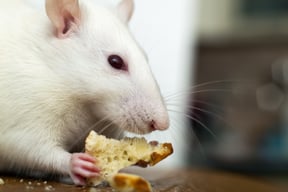
What are rodents?
Rodents, or mammals of the order Rodentia, are characterized by a single pair of incisors in the upper and lower jaws that never stop growing. You may be surprised to learn that over 40% of all mammal species are classified as rodents. Because rodents are such a broad classification, it stands to reason that they are extremely diverse in ecology and lifestyle. Rodents are native to all major land masses with the exception of New Zealand, Antarctica, and some small islands, but have been introduced to many of these areas through human activity, making them some of the most prevalent mammals in the world. Because of this, rodents have adapted to live in a wide variety of habitats, including human-made. Rodent species can be arboreal, fossorial, saltatorial, and even semiaquatic.
Some well-known rodents include mice, rats, squirrels, prairie dogs, porcupines, beavers, guinea pigs, and hamsters. The vast majority of rodents are small animals with sturdy bodies, short limbs, and long tails. They used their defining trait, their sharp incisors, as a mode of consuming food, digging burrows, and even as a weapon to defend themselves.
The rodents homeowners most often have to contend with are mice and rats, though squirrels have become a rising concern, as well. These rodents have extremely pliable bodies that allow them to squeeze through openings as small as the width of a pencil. Though small, they have the potential to cause massive damage to a home and personal belongings. Not only can they be difficult to prevent, but they can also be tricky to remove, as well.
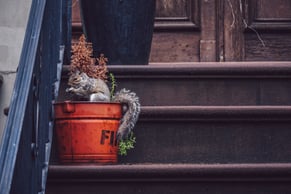
What kind of rodents invade homes?
While rodents include a staggering 2000+ species, there are a few common offenders that you’re likely to encounter in your home.
Deer Mice
Deer mice are small rodents who received their name due to their fur’s close resemblance to that of a deer. Typically round and less than 8 inches long head-to-tail, deer mice are easily identified by their bi-colored tail, which is usually half brown and half white. Deer mice live throughout the United States and generally become a problem as the weather cools. In the fall and winter, deer mice seek shelter in homes, garages, sheds, and even rarely used vehicles.
Deer mice are considered a serious health risk as they can transmit the potentially deadly virus that causes Hantavirus Pulmonary Syndrome. The virus is frequently transmitted by unintentionally inhaling dust particles contaminated with an infected deer mouse’s urine, feces, or saliva.
House Mice
House mice are the most commonly encountered rodent in residential dwellings. These rodents are native to Central Asia but can be found worldwide and throughout the United States. House mice are small, round, and typically a light gray in color with a cream or white belly. Maxing at about 8 inches from their nose to their tail, house mice are extremely adept at making their way into homes, often building nests in garages, attics, basements, within wall voids, and in pockets of insulation.
House mice pose a threat not only to your home and possessions but to your health as well. They have been linked to the spread of salmonella through their feces after consuming food contaminated by salmonella. In addition, house mice are known to cause something referred to as rat bite fever, a bacteria-borne disease that can appear up to 10 days after contact with a contaminated mouse.
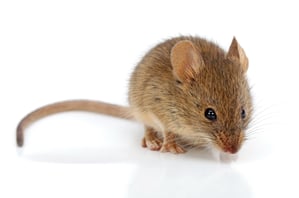
Norway Rats
Sometimes referred to as a street rat or sewer rat, Norway rats are thought to be of Asian origin, introduced to the United States in the 1700s. Now widely spread throughout the world, Norway rats have become troublesome to homeowners as they cause immense damage to properties and structures through their incessant gnawing. Despite their innate destructive abilities, Norway rats have poor vision and are colorblind, relying heavily on their incredible hearing, smell, touch, and taste. These rodents are larger than mice, their bodies growing to over 9 inches long with tails shorter than the lengths of their bodies.
Norway rats are carriers of a variety of serious diseases such as jaundice, rat bite fever, salmonella, trichinosis, and cowpox virus. These rats are also notorious for introducing fleas to homes.
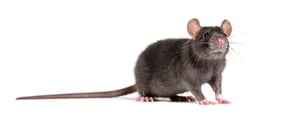
Roof Rats
Smaller than the Norway rat, roof rats are aptly named for their tendency to reside in the upper levels of buildings. Sometimes referred to as black rats or ship rats, roof rats are of Southeast Asian origin but are now common worldwide and especially prevalent in the coastal United States. Roof rats are lanky rodents with large eyes and ears, scaly tails, and smooth fur that is usually brown with black spotting.
Roof rats are best known for their role in spreading the bubonic plague in the 1300s. Today, roof rats are responsible for the transmission of other illnesses and diseases such as salmonella, rat bite fever, trichinosis, and typhus. They also carry and spread fleas readily.
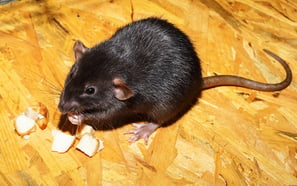
Why are rodents in my house?
When it comes to rodents, prevention is always the best course of action. Because of their destructive nature, a rodent’s presence in your home, even for a short time, spells guaranteed trouble. That said, preventing rodents from entering your home can be a difficult task. Mice, in particular, are capable of gaining entry to homes through small gaps, cracks, and holes that you might expect no living creature could ever get through. To understand how best to prevent rodents from entering your home, you must understand what they’re seeking out in the first place.
Food - Whether you realize it or not, you could be unintentionally feeding the rodents that make their way into your home. This is one major reason mice tend to seek out residences: unlimited food supply. Rodents are hardy little creatures and can easily survive off of unnoticed crumbs and food scraps, or worse, make their way into your kitchen pantry for the real buffet. They are also known to help themselves to bags of grain, birdseed, grass seed, pet food, or other bulk food items that you may store in your garage. They may squeeze their way into your car in search of trash like half-empty takeout bags or dropped morsels from your morning's grab-and-go breakfast.
Water - Your home can be a reliable water source for rodents. With so many rooms having access to readily available water – think kitchens, bathrooms, laundry rooms, and even garages – rodents will never have to stray from the home for a quick drink. Mice are capable of going a month or more without water, and even with easily accessible water available to them, they only need about 4ml to be quenched. Because they need so little water, they can survive by finding it in unexpected ways, such as by drinking condensation from water pipes, consuming excess water from houseplants, and helping themselves to a pet’s water bowl. This means that no matter how watertight you believe your home is, a mouse can still thrive.
Shelter - The most obvious reason that rodents scurry indoors is for shelter from predators and the elements. In the summertime, they will seek shelter for a reprieve from the heat. As we cool our homes for our own comfort throughout the summer, we’re unintentionally providing a temperature-controlled environment perfect for rodents to find relief in. The same can be said for the winter. Consistently warmed homes offer an escape for rodents from the bitter cold and provide an excellent home base for building their nests. The constant need for comfortable and safe shelter is exactly why rodents are not considered a seasonal pest but rather a year-round one. This is especially true for homes with garages, where they can live undetected for a long time and find plenty of dark places to hide and nest.
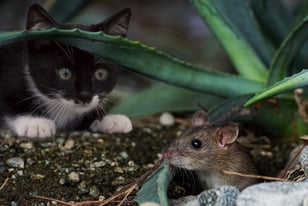
What kind of damage can rodents cause in my home?
Though small, rodents can cause significant damage to your home. Perhaps most concerning of all is the structural damage mice and rats can inflict on homes through their incessant chewing, nest-building, and defecation. Some other troublesome repercussions of a rodent infestation include:
- Burrowing into upholstered furniture and building nests inside.
- Tunneling through insulation and using the material to build softer nests.
- Gnawing the rubber insulation of wires behind walls, resulting in the potential for electrical fires.
- Chewing through and destroying expensive or sentimental items, including artwork, documents, heirlooms, books, and more.
- Their urine and droppings can stain and ruin ceilings, walls, and more. These trails also attract more rodents, the scent of their defecation serving as a beacon to other rodents, saying: this is a good place to live!
The damage rodents can leave in their wake isn’t limited to strictly material items, either. Mice and rats are capable of carrying and spreading diseases that are harmful to humans. Some diseases rodents are known to spread include hantavirus, salmonella, and lymphocytic choriomeningitis. These diseases are commonly spread through rodents’ droppings. Even if you are careful to handle the droppings with gloved hands, you may still be at risk. Rodent urine and droppings can dry and eventually turn to dust, then become airborne and leaving homeowners susceptible to breathing in harmful viruses.
It should be noted that some diseases carried by rodents can also be transmitted to your pets. Humans can be vulnerable to passed viruses from cats and dogs, as well.
How can I prevent rodents from entering my home?
Luckily, there are a few different ways to shore up your home to prevent a rodent infestation.
- Repair damaged door and window screens.
- Install door sweeps to prevent any gapping.
- Store firewood away from the home.
- Keep landscaping trimmed back and away from the home.
- Seal visible cracks, gaps, holes, or crevices (especially where pipes or utilities enter the home) with caulk, concrete, or metal.
- Replace failing weather-stripping around your home’s foundation and windows.
- Ensure all basements, attics, and crawl spaces are dry and well-ventilated.

How can I get rid of rodents in my home?
If you suspect you have a rodent in or around your home, we recommend you call a trusted pest control professional immediately. Rodents are notorious for their ability to reproduce expeditiously and should be handled, if possible before a true infestation occurs. In the event of a single rodent in your home or a full-on infestation, call EcoShield immediately. EcoShield’s proven, and guaranteed 3-step process addresses rodent infestations holistically and provides protection for not only the current problem but future problems, as well.
EcoShield's exclusion services are an effective solution to eliminate rodent infestations by removing and treating existing infestations and by also sealing and repairing entry points to prevent mice from continuing to enter your home.
If you are experiencing rodent problems in your home, give EcoShield a call today or fill out the form at the bottom of this page. Our experts are ready to help remove rodents and ensure your home stays pest-free for the ultimate health and safety of you and your loved ones.